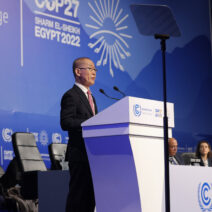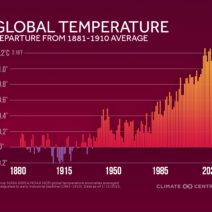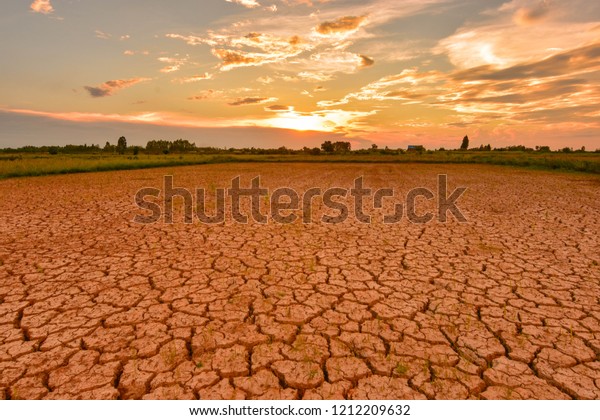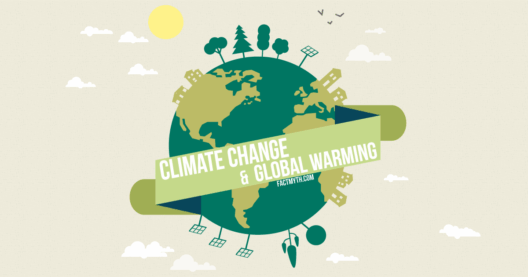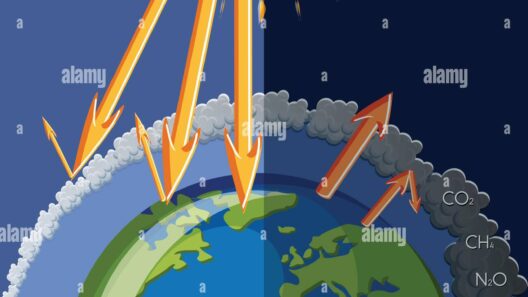The greenhouse effect is a natural and essential phenomenon that allows life to flourish on Earth. However, human activities have altered its balance over time, intensifying concerns about climate change. Understanding the myriad factors that influence this critical process is paramount for developing effective environmental strategies. This article delves into the key elements affecting the greenhouse phenomenon, elucidating their roles and interconnections.
One can’t adequately explore the greenhouse effect without discussing the various greenhouse gases (GHGs) that contribute significantly to it.
Greenhouse Gases: The Catalysts of Climate Change
At the heart of the greenhouse effect are several gases, primarily carbon dioxide (CO2), methane (CH4), nitrous oxide (N2O), and fluorinated gases. Each of these has unique sources and varying potentials for trapping heat in the atmosphere.
Carbon dioxide originates primarily from fossil fuel combustion, land-use changes, and industrial processes. It is perhaps the most well-known GHG, largely due to its significant role in anthropogenic warming. Conversely, methane, which has a shorter atmospheric lifespan but is considerably more effective at capturing heat, is released from agricultural practices, landfills, and during the extraction or transport of fossil fuels.
Nitrous oxide, often overlooked in discussions, is released from synthetic fertilizers, fossil fuel combustion, and various industrial processes. Moreover, fluorinated gases, though present in much smaller quantities, possess tremendous global warming potentials, with some being thousands of times more potent than CO2 over a century.
The interplay of these gases creates a complex dynamic, where an increase in one can exacerbate the effects of others, illustrating the urgent need for comprehensive climate action strategies.
Natural and Anthropogenic Influences on GHG Concentrations
While GHG emissions largely result from human activities, natural processes also play a fundamental role in regulating their concentrations. Forests and oceans serve as significant carbon sinks, absorbing substantial amounts of CO2. Deforestation, however, diminishes this capacity and releases stored carbon back into the atmosphere, exacerbating the greenhouse effect.
Volcanic eruptions can produce greenhouse gases, albeit on a much smaller scale than human activities. Their temporary influence can notably alter local climates, but the long-term implications are overshadowed by anthropogenic emissions.
Climate feedback mechanisms additionally complicate the scenario. For instance, warming Arctic regions are experiencing increased permafrost thaw, releasing vast quantities of methane trapped below the surface. Such processes indicate that changes in one area can have cascading impacts globally, emphasizing the intricacy of climate systems.
The role of the biosphere, including the intricate web of ecosystems, cannot be overstressed. Healthy ecosystems not only provide essential services, such as carbon sequestration but also maintain biodiversity essential for resilience against climate shocks. Preservation and restoration efforts in this domain are critical for mitigating the greenhouse effect.
Human Activities: The Driving Force Behind Change
Population growth and urban development are paramount drivers influencing the greenhouse effect. As the global population increases, so does the demand for energy, transportation, and infrastructure. Urban areas are particularly significant contributors to GHG emissions, largely due to concentrated energy consumption and industrial activities.
Moreover, agricultural intensification to feed the growing population leads to practices that emit substantial amounts of GHGs. The use of fertilizers, livestock farming, and the conversion of forests into agricultural lands all release greenhouse gases. Sustainable agricultural practices can mitigate some of these impacts by enhancing soil health and reducing dependence on chemical inputs.
Transportation is another critical factor; the global reliance on fossil fuels in land, air, and sea travel contributes immensely to carbon emissions. Transitioning to low-carbon and sustainable transport methods is not merely an option; it is an obligation to curb the escalating greenhouse effect.
Industrial activities further exacerbate the situation, with manufacturing processes frequently releasing greenhouse gases. The transition to green technologies and processes is essential for industries aiming to reduce their carbon footprints.
Policy and Global Cooperation: The Way Forward
Legislation and international treaties play pivotal roles in addressing greenhouse gas emissions. Agreements such as the Paris Agreement foster global cooperation, encouraging countries to set and achieve emission reduction targets. However, effective implementation and accountability remain challenges that require diligent attention.
Public awareness and engagement are equally vital. Individuals can make collective impacts through lifestyle choices that promote sustainability, such as reducing waste, conserving energy, and advocating for environmentally-friendly policies. Grassroots movements have proven instrumental in pushing for systemic changes that address the root causes of the greenhouse effect.
In conclusion, understanding the various factors that affect the greenhouse effect is crucial for both policy formulation and individual action. The intricate interplay between greenhouse gases, natural ecosystems, human activities, and policy measures creates a complex web of influences that must be addressed holistically. As we navigate this challenge, fostering global cooperation, advocating for sustainable practices, and preserving natural ecosystems will be paramount in mitigating the greenhouse phenomenon and securing a livable planet for future generations.
